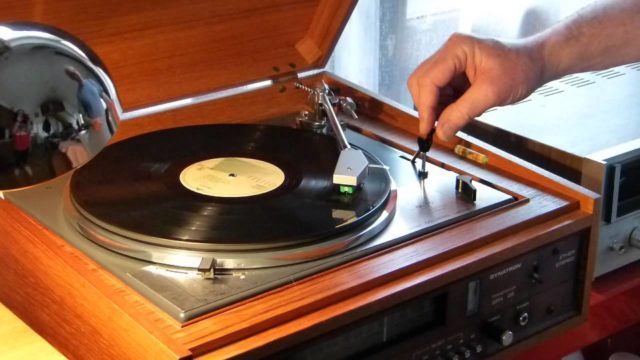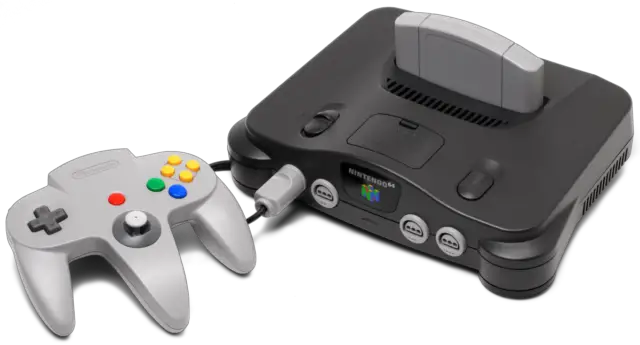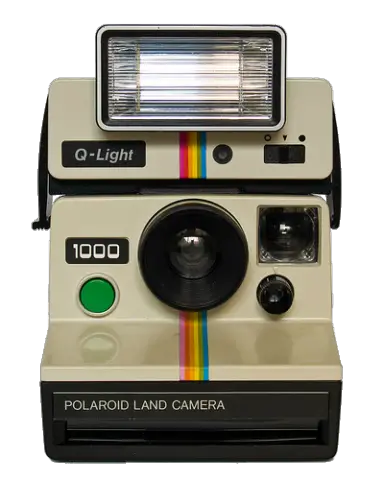Who remembers analogic Polaroid cameras, dial-up telephones, floppy-disks, or even Gameboys today? Well, for those older than 40 years these pieces of technology remind us a lot of our childhood. But now, moving forward the 21st century, that traditional tech which we grew up with has been replaced by sleeker, more compact, and faster devices.
Technology that was once so cool for us, like vinyl records or Gameboy, quickly became obsolete as new tech arrived. Or, at least, so we thought. While most of our childhood favorites are likely to stay in the past, a few ones have begun to resurge:
Vinyl Long-Play (LP) Records

Music has made a swift return to its old-tech roots. With compact and portable devices like smartphones, iPods, and MP3 players, it is hard to believe that a cumbersome disk with limited storage still remains popular.
So what is the secret to their success? Justin Pomerleau, the owner of 3 vintage stores, believes that vinyl “fosters a connection between the listener and music that is difficult to achieve with digital”. It is true that pulling a record out of its sleeve, hearing the needle scratch, and enjoying the warm melody emitted from a record player, is not quite the same as pressing play on a phone.
Just like the analogic cameras, vinyl long-play (LP) records today are slightly different than back in the 60s. Modern albums tend to be thicker and sound better than when these vinyl discs were first introduced. Some turntables even come equipped with a USB port, allowing listeners to digitize their LP collections. While digital music still reigns supreme, vinyl continues to transform the listening experience for thousands of music lovers.
Super Nintendo Entertainment System (SNES)

Video game fans will love this spectacular coming back. Earlier this year, Nintendo announced the upcoming release of the Mini Super Nintendo Entertainment System (SNES). Complete with 21 pre-installed classic games and 2 controllers, the system stays true to its original design from the early 1990s.
An added bonus for those who buy the console is the never-before-released game Star Fox 2, that was abandoned in 1995. Furthermore, the system’s HDMI cable allows players to get the full game effects on modern flat-screen TVs.
With such popularity today, it is hard to believe the entire gaming industry almost went completely under. But Nintendo has managed to adapt to changes and loyal fans are eager to once again play the console they loved as children.
The Polaroid Camera

When Edwin Land invented the Polaroid camera in 1945, he revolutionized photography by creating the first camera to print photos instantly. When digital cameras reached the market in the 1990s, they further transformed the industry, but this time at the expense of the iconic Polaroid. Digital cameras could take multiple photos in seconds and allowed you to easily duplicate and share them countless times over. By the turn of the 21st century, Polaroid cameras had nearly been forgotten and the company was on the edge of bankruptcy.
But instead of fading away into history books as an ancient artifact, the Polaroid stuck around and has since earned its spot as a vintage camera. There is something magical about holding a clunky camera up to your eye, pressing the shutter, and printing out a unique photo.
This gadget’s comeback is not without a modern twist. While original-style Polaroid cameras are still for sale, many people buy updated models like the Polaroid Snap. The Snap has a microSD card that stores the user’s photos and has several filter options, including the beloved vintage sepia tone. In this sense, owners of a Polaroid Snap get the best of both worlds; a uniquely printed vintage photo, and a digital copy to save and share online.
Now, what exactly do vinyl LP records, Nintendo gaming consoles, and Polaroid cameras have in common?
A sustained success for comeback products occurs when they achieve a perfect balance between old and new, just like these brands have done. This balance tugs on the heartstrings without abandoning functionality and relevance for modern consumers. However, we should not forget that those original artifacts have become true treasures for nostalgic users and collectors.
